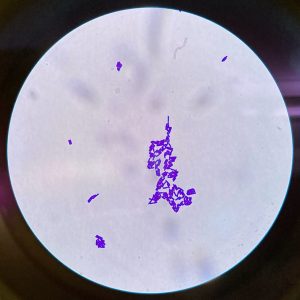I am a research assistant in Dr. Son’s neurodevelopment lab, and I am conducting a study investigating the effects of ZnSO4-induced neurotoxicity on anxiety-like behavior in zebrafish. I am also investigating the role of the habenula in mediating this anxiety-like behavior. Working alongside Dr. Son, I hope to learn as much as I can from him in this area of study, and take advantage of the myriad of resources available at my fingertips. It seems that every day I learn a new technique, or skill relevant to my area of study, and I realize that as my internship progresses I will compile quite the repertoire of laboratory practices. Additionally, I hope to see my knowledge in the field of neuropsychology bloom as I attempt to absorb all that Dr. Son has to share with me.
I aspire to be a physician, and I have recently learned that I would like research to be a part of my career as well. Therefore, this internship will help me acquire the skills necessary to further pursue this goal, especially those pertaining to research. I will learn how to improve my ability to design and carry out an experiment successfully, a process that also teaches critical thinking skills beyond belief. Furthermore, the ups and downs of performing a research study will teach me determination and persistence; two attributes critical to the success of a physician. Additionally, this internship will help me to expand my knowledge in an area of study that interests me, perhaps illuminating a path for me to follow when I pursue research as a career.


Jillian Haller ’23
Neuroscience

